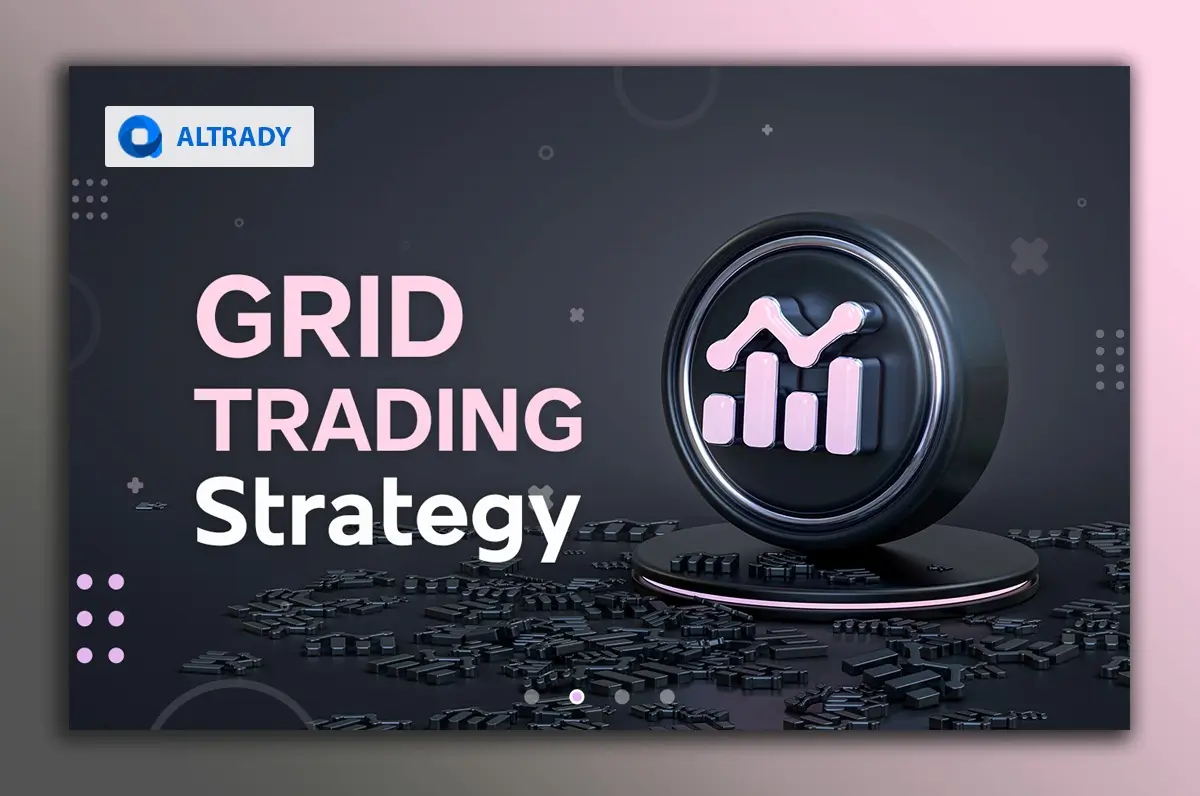Black Friday is loading…
Get 40% off with Altrady’s yearly plan and take the lead.
.svg)
.svg)
.svg)
.svg)
.svg)
.svg)
.svg)
.svg)
.svg)
.svg)
.svg)
.svg)
.svg)

Crypto markets are volatile environments where the grid system strategy is a recognized trading method whose popularity relies on its distinctive approach letting traders address market volatility and diversification. Combining diversification, automation, and risk management makes grid trading an optimal option for crypto traders.
In this article, we will explore the advantages of grid systems, and how this approach allows traders to leverage on market fluctuations while minimizing risk. You will end up with a broader understanding of grid trading and how to set up a grid system.
 Understanding Grid Trading
Understanding Grid Trading
Grid trading is a method based on creating a group of buy and sell orders strategically spread at predefined levels, this way grid systems can take advantage of market volatility while diversifying to make consistent profits.
Without the need to forecast market direction, grid systems can allow traders to benefit from price fluctuations. Essentially, this technique requires setting buy and sell orders at specified intervals below and above a predefined price level. The core idea is to leverage recurrent market fluctuations, addressing upside and downside movements, especially in range markets.
This strategy can be used in any market and trading style, and recently it has been very popular among crypto traders who use it to enter positions during high volatility seasons.
Automation is one of the key features of the grid approach.
It can be automated, which offers several advantages. Automation guarantees the orders are established exactly as planned, avoiding the possibility of human mistakes. This is especially useful in cryptocurrencies where the markets are open to trade 24-7.
Furthermore, these types of methods help traders maintain discipline and consistency in their trades, which is essential for long-term success.
To configure a grid system and set the parameters, you must follow these steps:
Setting a grid system is especially useful in range markets. When the price of an asset fluctuates within a specific range, grid systems can be a constant source of income.
For example, grid systems can benefit from a crypto coin that repeatedly fluctuates between specific prices, like $1 and $3, making profits from the buy and sell orders placed at those levels.
As long as the asset stays within the range, traders have the potential to earn a substantial income.
One of the main advantages of setting up a grid system is the ability to diversify a portfolio properly. As mentioned previously, this strategy involves creating a grid of buy and sell orders at specific price levels, meaning traders have long and short positions together.
This diversification helps spread risk across the market. If one part of your grid system is in the red, another could be in the green, potentially offsetting the losses.
For example:
Typical trading methods and strategies usually involve making quick decisions based on live market movements which can generate emotional stress. This can lead to impulsive trading and substantial losses.
The grid system, on the other hand, is more systematic and less driven by emotions. Traders set their grid parameters and let the strategy work.
This reduced emotional stress can be particularly beneficial for traders who struggle with impulsive decision-making.

Let's try to exemplify a grid system, considering the scenario of a crypto trader using this method on the BTC market.
If the market goes through volatility phases and the price fluctuates within a range, the system will be able to profit from the price movements, despite the prevailing trend.
The trader sets up the following grid:
| Buy orders | Sell orders |
|---|---|
| 50,000 | 53,000 |
| 49,000 | 54,000 |
| 48,000 | 55,000 |
Using appropriate position sizing and stop loss orders is crucial to protect the capital.
Beyond the fact that grid systems offer multiple advantages, it is essential to implement robust risk management policies.
Grid systems, like any trading strategy, carry risks and it is important to be prepared for unfavorable market conditions.
Setting a grid system can be a simple and effective way to trade the crypto market, but it also requires detailed planning and management. You should always test your grid system on a demo account before using it on a live account and use appropriate risk management tools to limit your losses and protect your profits.
In Altrady you can start setting up effective grid systems with bots alongside multiple charting tools by signing up for a free trial account with paper trading.